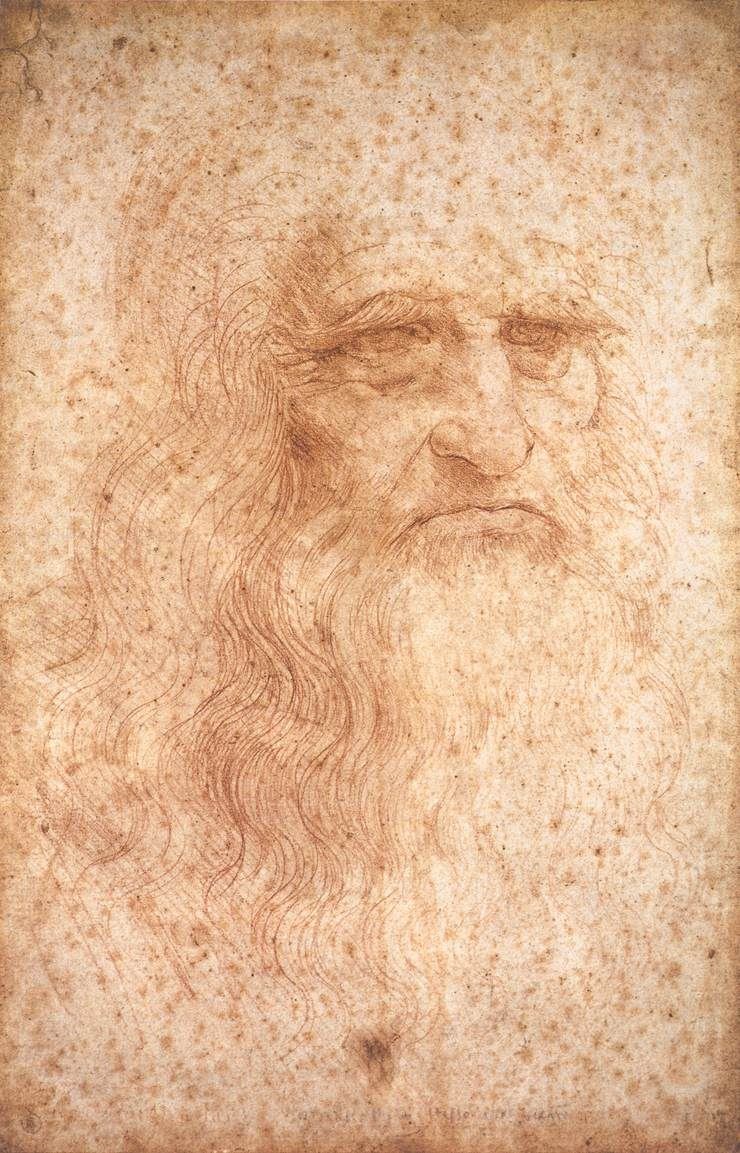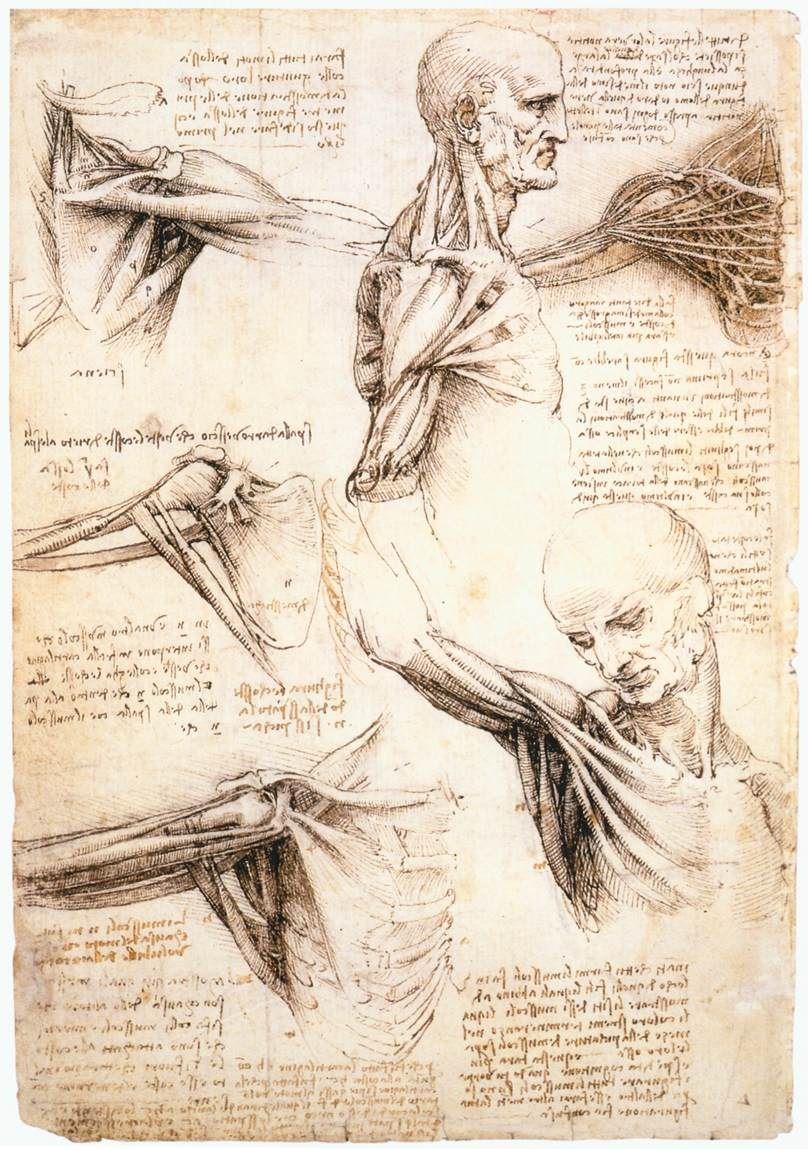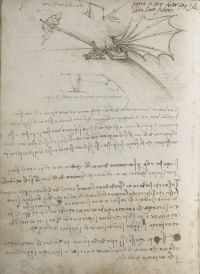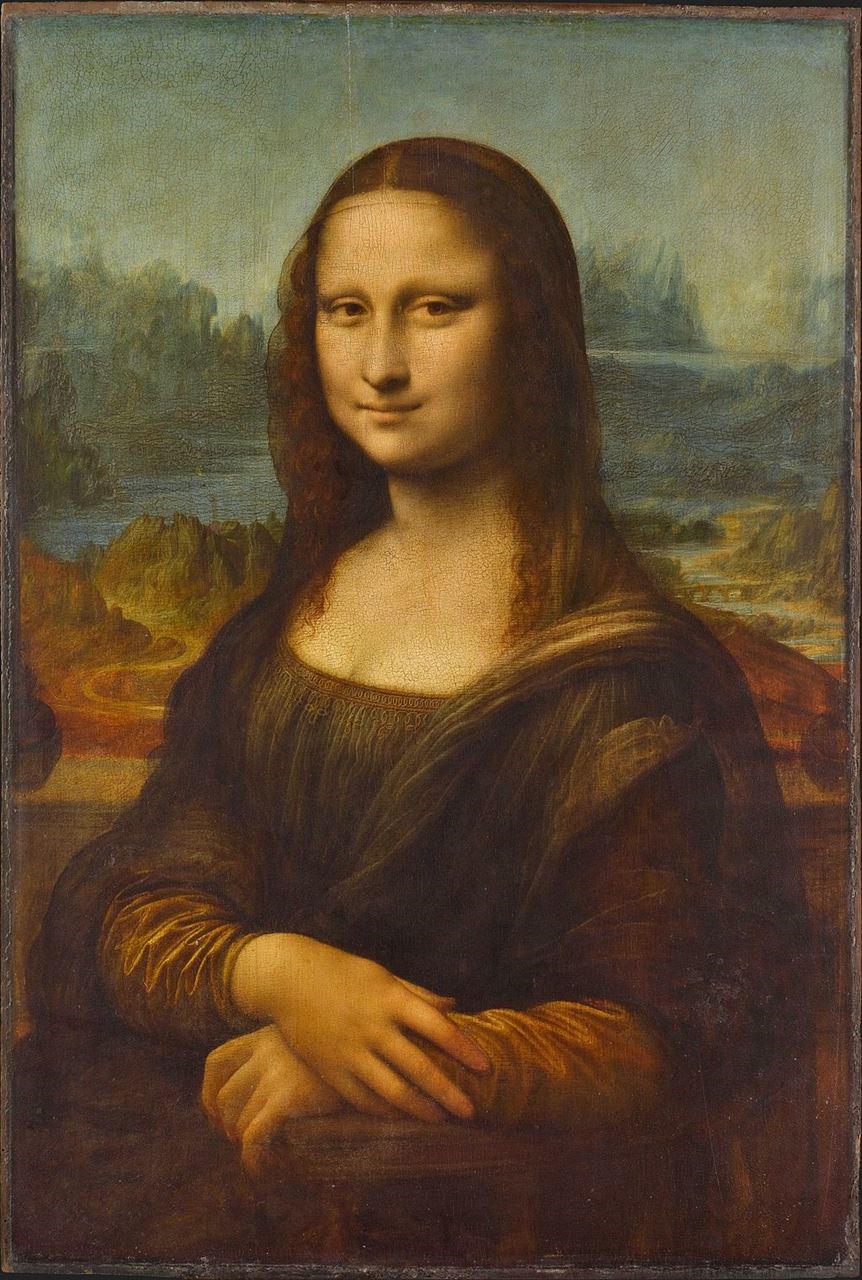 Presumed portrait of Leonardo da Vincihttps://www-groups.dcs.st-and.ac.ukA Painter, Sculptor, Architect, Mathematician, Engineer, Anatomist, and Inventor whose belonging to the curious nature of the world led him to become an archetype of the “Renaissance man”. His name is Leonardo di ser Piero da Vinci, once being the master of arts and science, he upheld a genius mind of intellectual oddity perceptible by comparison to that of any other inpidual during his time. Born on April 15, 1452, in Vinci Italy, Leonardo was the illegitimate son of and raised by Piero da Vinci, a descendant from a lineage of minor Florentine officials (“Leonardo da Vinci”, DISCovering Biography). By the age of 15, his father would apprentice him by his talent of drawing to Andrea del Verrocchio, a master sculptor, painter, and goldsmith of Florentine art (“Leonardo da Vinci”, Authors and Artists for Young Adults). He would become known for works of outstanding artistry, skill, and workmanship such as The Last Supper and Mona Lisa. Moreover, Leonardo’s profound interests in aviation would lead him to study local avifauna and proceed to design rudimentary, yet complex flying machines. As a hero, one must possess the determination required to continue in a course of action with persistence, live with a purpose and intention to follow a route of success, and commit to taking measures beyond normal abled minds. Leonardo da Vinci was a genius with his curiosity to explore the beauty of science and nature while pursuing knowledge with dedication, hard work, and by living with the spirit of inquiry till death.
Presumed portrait of Leonardo da Vincihttps://www-groups.dcs.st-and.ac.ukA Painter, Sculptor, Architect, Mathematician, Engineer, Anatomist, and Inventor whose belonging to the curious nature of the world led him to become an archetype of the “Renaissance man”. His name is Leonardo di ser Piero da Vinci, once being the master of arts and science, he upheld a genius mind of intellectual oddity perceptible by comparison to that of any other inpidual during his time. Born on April 15, 1452, in Vinci Italy, Leonardo was the illegitimate son of and raised by Piero da Vinci, a descendant from a lineage of minor Florentine officials (“Leonardo da Vinci”, DISCovering Biography). By the age of 15, his father would apprentice him by his talent of drawing to Andrea del Verrocchio, a master sculptor, painter, and goldsmith of Florentine art (“Leonardo da Vinci”, Authors and Artists for Young Adults). He would become known for works of outstanding artistry, skill, and workmanship such as The Last Supper and Mona Lisa. Moreover, Leonardo’s profound interests in aviation would lead him to study local avifauna and proceed to design rudimentary, yet complex flying machines. As a hero, one must possess the determination required to continue in a course of action with persistence, live with a purpose and intention to follow a route of success, and commit to taking measures beyond normal abled minds. Leonardo da Vinci was a genius with his curiosity to explore the beauty of science and nature while pursuing knowledge with dedication, hard work, and by living with the spirit of inquiry till death.
 Leonardo's anatomical studies on the shoulder https://www.wga.huLeonardo’s ambitions were clear with how his devotion to a passion for exploring science and nature had paved a pathway towards his success in obtaining a mastery of different skills. Being driven by his curiosity about the world, “Leonardo da Vinci might be called the original Renaissance Man, due not only to the period in which he lived but also to his brilliant versatility. The list of his skills and occupations is staggering: painter, writer, inventor, architect, botanist, engineer, mathematician, musician, city planner, philosopher, costume and set designer. He tackled each field of endeavor with great intensity, developing new and often startling ideas. Leonardo integrated the range of his expertise into every undertaking; his artwork inevitably showcased his scientific and philosophical background. During his life and consistently since his death, Leonardo has been revered by artists, scientists, scholars, popes, and king” (“Leonardo da Vinci”, UXL Biographies). Leonardo’s genius denotes something of the purity and quality of his mindset by how he has dedicated himself to studies in his respective fields of research. He knew his own goals and that he fulfilled them not to impress others by showcasing his proficiency, but rather he wanted to satisfy his ongoing pursuit of acquiring knowledge about the curious nature of the world. Being committed to a multitude of varying subjects as Leonardo is respected for, is a trait obtainable through one's determination towards pursuing one or more different goals. To take a course of action in relation to goals with the passion and dedication for success is what Leonardo’s works represent for himself. In addition, the image of Leonardo’s peculiarity was of a brilliancy, “Although largely unschooled in an institutional sense, Leonardo da Vinci ranks as one of the most accomplished figures in European history. He practiced the arts of painting, sculpture, and drawing to a high level of perfection. At the same time he also found employment as an architect, a civil and military engineer, and even a theatrical designer” (“Leonardo da Vinci”, Humanities Through the Eras). In spite of the fact that he was practically unschooled, Leonardo became an expert in many different occupations that required different skills he had acquired through his excellence of the many subjects he explored. To be as adept as Leonardo was in his respective fields of study, one had to have a strong will towards the work required in pursuing an effort in one’s own goal. Among art, Leonardo was also a master of architecture, engineering, and theatrical design. He was both determined and passionate about the work he does, raising a merit only obtainable through the hard work he had been committed to. He was a genius and a master of all fields he deemed to have a naturally curious aspect, while pursuing excellence in his many works and occupations. He was a master in these professions through the development of his skill sets, by researching the science and nature of the world that interested him. Often experimenting with different concepts and ideas, the dedication that he implemented into his work was driven by his ultimate goal to become a universally cultured human being.
Leonardo's anatomical studies on the shoulder https://www.wga.huLeonardo’s ambitions were clear with how his devotion to a passion for exploring science and nature had paved a pathway towards his success in obtaining a mastery of different skills. Being driven by his curiosity about the world, “Leonardo da Vinci might be called the original Renaissance Man, due not only to the period in which he lived but also to his brilliant versatility. The list of his skills and occupations is staggering: painter, writer, inventor, architect, botanist, engineer, mathematician, musician, city planner, philosopher, costume and set designer. He tackled each field of endeavor with great intensity, developing new and often startling ideas. Leonardo integrated the range of his expertise into every undertaking; his artwork inevitably showcased his scientific and philosophical background. During his life and consistently since his death, Leonardo has been revered by artists, scientists, scholars, popes, and king” (“Leonardo da Vinci”, UXL Biographies). Leonardo’s genius denotes something of the purity and quality of his mindset by how he has dedicated himself to studies in his respective fields of research. He knew his own goals and that he fulfilled them not to impress others by showcasing his proficiency, but rather he wanted to satisfy his ongoing pursuit of acquiring knowledge about the curious nature of the world. Being committed to a multitude of varying subjects as Leonardo is respected for, is a trait obtainable through one's determination towards pursuing one or more different goals. To take a course of action in relation to goals with the passion and dedication for success is what Leonardo’s works represent for himself. In addition, the image of Leonardo’s peculiarity was of a brilliancy, “Although largely unschooled in an institutional sense, Leonardo da Vinci ranks as one of the most accomplished figures in European history. He practiced the arts of painting, sculpture, and drawing to a high level of perfection. At the same time he also found employment as an architect, a civil and military engineer, and even a theatrical designer” (“Leonardo da Vinci”, Humanities Through the Eras). In spite of the fact that he was practically unschooled, Leonardo became an expert in many different occupations that required different skills he had acquired through his excellence of the many subjects he explored. To be as adept as Leonardo was in his respective fields of study, one had to have a strong will towards the work required in pursuing an effort in one’s own goal. Among art, Leonardo was also a master of architecture, engineering, and theatrical design. He was both determined and passionate about the work he does, raising a merit only obtainable through the hard work he had been committed to. He was a genius and a master of all fields he deemed to have a naturally curious aspect, while pursuing excellence in his many works and occupations. He was a master in these professions through the development of his skill sets, by researching the science and nature of the world that interested him. Often experimenting with different concepts and ideas, the dedication that he implemented into his work was driven by his ultimate goal to become a universally cultured human being.
 Leonardo's design for a flying machine or catapaulthttps://www.universalleonardo.orgLeonardo lived with a purpose and intent in life, having a unique perspective on the outlook of his own life. Being the curious inpidual he was, “Leonardo drew constantly, filling notebooks with depictions of faces, plants, flowers, rocks, machines, and animals. He considered it the artist's duty to understand the structure of things he wanted to draw; this conviction led him to the study of anatomy, especially the workings of the muscles and the science of optics—how the eye sees. He was equally curious about the physical elements, conducting experiments on the properties of light, air, and weather. Museums retain pages and pages of his studies for all sorts of machines, bridges, carriages, tanks, and other military equipment—even flying machines” (“Leonardo da Vinci”, UXL Biographies). Leonardo had a brilliant mind for questioning the unknown, leading to his many thoughts and ideas for marvelous works such as his inventions and studies he’s accomplished in his life. He knew what he wanted to occupy his time with, as his spirit for an inquiry was endless. It was without a doubt that Leonardo was a genius, whose curiosity about questions for the world led him to want to make discoveries in human and animal bodies, flight, and other subjects of his expertise. He lived doing what he loved, from his early years till death. Leonardo had worked, studied, and researched nature and science his entire life, his mind being open to new ideas that he helped to define a creative genius. However, “‘Jack of all trades, master of none,’ is a criticism often leveled at Leonardo. So talented was the man, that many say he squandered his talents in a relentless search for new forms of self-expression. Indeed, his earliest biographer, the painter-turned-chronicler Giorgio Vasari, had this to say about Leonardo's talents: ‘He was a man of regal spirit and tremendous breadth of mind’ but ‘he was always setting himself to learn many things only to abandon them almost immediately. . . . He would have made great advances in knowledge and in the foundations of learning had he not been of such a various and changeable nature’” (“Leonardo da Vinci”, Authors and Artists for Young Adults). The criticism that states Leonardo was a “jack of all trades, master of none” implied the fact that he was never able to fully apply his talent to his occupations. Nonetheless, this was because of how he was never not pursuing the knowledge that was hidden in science and nature. He spent his lifetime searching to understand this, often not applying his full attention to jobs that he lost interest in. Leonardo always had an appreciation for the world in how he perceived the beauty with an insightful mind. He occupied his time not just with artworks commissioned by inpiduals belonging to a high society, but also made profound discoveries in his respective fields of research. Leonardo lived with purpose in mind, living and pursuing his journey to acquire knowledge by studying painting among sculpting, architecture, engineering, botany, and human anatomy. His ideas were seemingly endless as his notebooks were filled with inventions and discoveries in the many subjects he explored.
Leonardo's design for a flying machine or catapaulthttps://www.universalleonardo.orgLeonardo lived with a purpose and intent in life, having a unique perspective on the outlook of his own life. Being the curious inpidual he was, “Leonardo drew constantly, filling notebooks with depictions of faces, plants, flowers, rocks, machines, and animals. He considered it the artist's duty to understand the structure of things he wanted to draw; this conviction led him to the study of anatomy, especially the workings of the muscles and the science of optics—how the eye sees. He was equally curious about the physical elements, conducting experiments on the properties of light, air, and weather. Museums retain pages and pages of his studies for all sorts of machines, bridges, carriages, tanks, and other military equipment—even flying machines” (“Leonardo da Vinci”, UXL Biographies). Leonardo had a brilliant mind for questioning the unknown, leading to his many thoughts and ideas for marvelous works such as his inventions and studies he’s accomplished in his life. He knew what he wanted to occupy his time with, as his spirit for an inquiry was endless. It was without a doubt that Leonardo was a genius, whose curiosity about questions for the world led him to want to make discoveries in human and animal bodies, flight, and other subjects of his expertise. He lived doing what he loved, from his early years till death. Leonardo had worked, studied, and researched nature and science his entire life, his mind being open to new ideas that he helped to define a creative genius. However, “‘Jack of all trades, master of none,’ is a criticism often leveled at Leonardo. So talented was the man, that many say he squandered his talents in a relentless search for new forms of self-expression. Indeed, his earliest biographer, the painter-turned-chronicler Giorgio Vasari, had this to say about Leonardo's talents: ‘He was a man of regal spirit and tremendous breadth of mind’ but ‘he was always setting himself to learn many things only to abandon them almost immediately. . . . He would have made great advances in knowledge and in the foundations of learning had he not been of such a various and changeable nature’” (“Leonardo da Vinci”, Authors and Artists for Young Adults). The criticism that states Leonardo was a “jack of all trades, master of none” implied the fact that he was never able to fully apply his talent to his occupations. Nonetheless, this was because of how he was never not pursuing the knowledge that was hidden in science and nature. He spent his lifetime searching to understand this, often not applying his full attention to jobs that he lost interest in. Leonardo always had an appreciation for the world in how he perceived the beauty with an insightful mind. He occupied his time not just with artworks commissioned by inpiduals belonging to a high society, but also made profound discoveries in his respective fields of research. Leonardo lived with purpose in mind, living and pursuing his journey to acquire knowledge by studying painting among sculpting, architecture, engineering, botany, and human anatomy. His ideas were seemingly endless as his notebooks were filled with inventions and discoveries in the many subjects he explored.
 The Mona Lisahttps://focus.louvre.frLeonardo da Vinci was a genius with his curiosity to put forth in deeply understanding science and nature while pursuing towards the cognizance of the world with great persistent effort and living to realize the unseen, but fathomable beauty of the world. Leonardo was an inspiration because of the dedication and intellectual insight he implemented into his work. Additionally, he was an inpidual whose curiosity had driven his ongoing motive to acquire knowledge of the many interesting things about the way things had come about from simple to complex observations. He was a universal genius that sought after the unknown and showed his discoveries through artworks and inventions that would be respected by many in the future. Leonardo was a hero, a genius, and had a heart for his own questions about nature and science to follow through with actions that earns his place in the world to be an aspiring figure.
The Mona Lisahttps://focus.louvre.frLeonardo da Vinci was a genius with his curiosity to put forth in deeply understanding science and nature while pursuing towards the cognizance of the world with great persistent effort and living to realize the unseen, but fathomable beauty of the world. Leonardo was an inspiration because of the dedication and intellectual insight he implemented into his work. Additionally, he was an inpidual whose curiosity had driven his ongoing motive to acquire knowledge of the many interesting things about the way things had come about from simple to complex observations. He was a universal genius that sought after the unknown and showed his discoveries through artworks and inventions that would be respected by many in the future. Leonardo was a hero, a genius, and had a heart for his own questions about nature and science to follow through with actions that earns his place in the world to be an aspiring figure.
Page created on 2/16/2018 5:10:46 AM
Last edited 2/16/2018 6:45:52 AM
